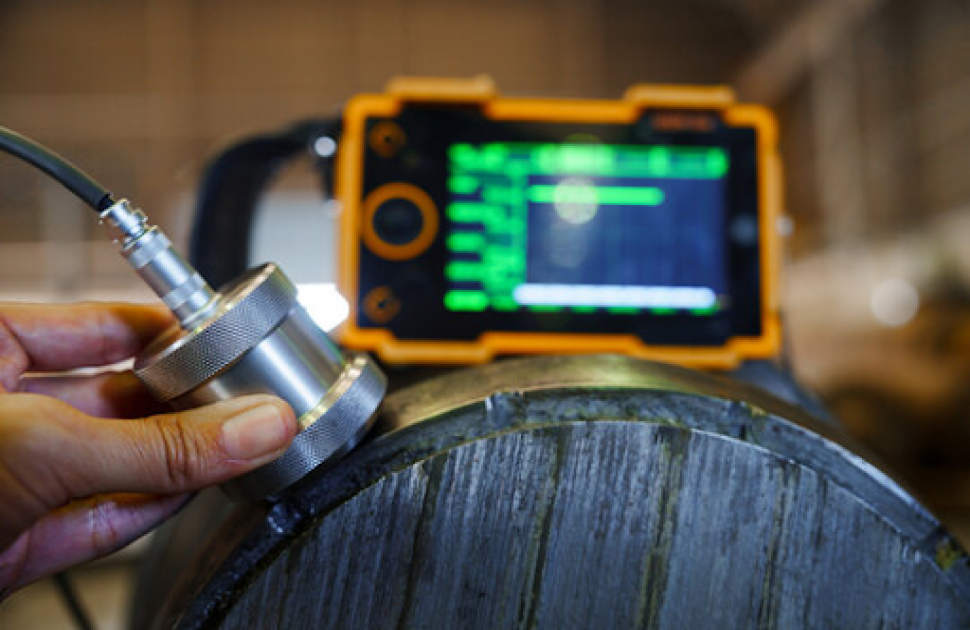Table of Content
- Introduction
- History of Ultrasonic Transducers
- Ultrasound Waves- Everything You Need to Know
- Working of Ultrasonic Transducers
- Types of Transducers Used in Non-destructive Testing
- Applications of Ultrasonic Transducers
- Conclusion
- Key Takeaways
In the world of engineering, few innovations have silently shaped our world as profoundly as ultrasonic transducers.
These remarkable instruments, called ultrasonic transducers, utilize the potential of sound waves beyond the reach of our hearing.
They possess a rich history interwoven with scientific exploration and technological progress.
In this article, we embark on a journey through time and technology, delving into the captivating history of ultrasonic transducers, their operational intricacies, and the fields they emit.
To fully grasp the significance of Ultrasonic Transducers in our modern era, it's imperative to first comprehend their historical origins.
We'll trace this evolution, from the early sound experiments conducted by luminaries like Galileo Galilei to the pioneering work of Pierre Curie in the late 19th century, and explore the various types of Ultrasound transducers that have arisen over time, establishing them as indispensable tools in areas including medical imaging, Non-destructive Testing, and industrial inspections.
These pioneers laid the foundation for the remarkable devices that modern society relies on today in fields as diverse as medicine, manufacturing, construction, etc.
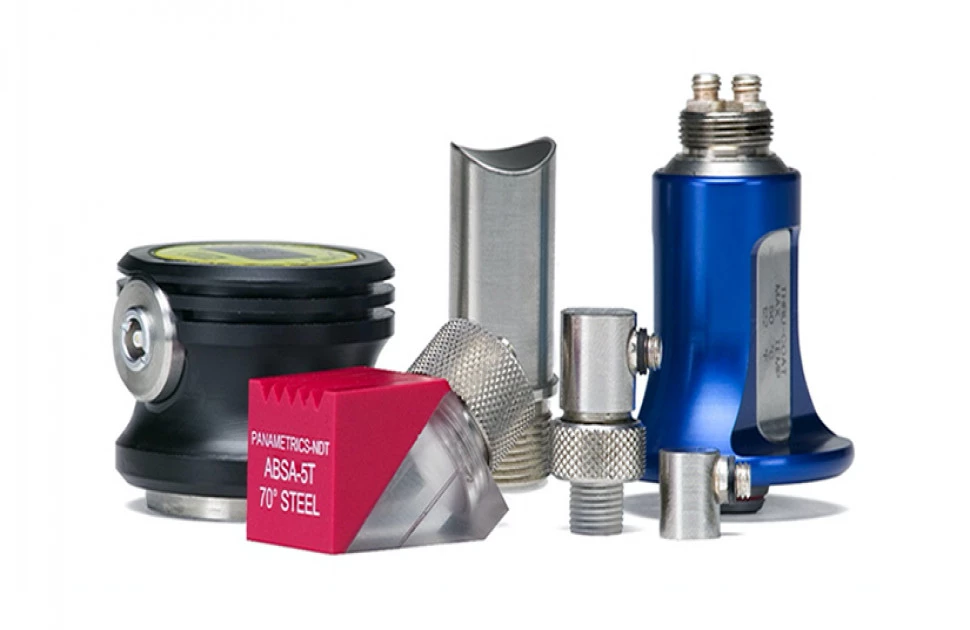
History of Ultrasonic Transducers
The genesis of Ultrasonic Transducers can be traced back to the 18th century when scientists embarked on the exploration of sound and its inherent characteristics.
- 18th Century Sonic Enlightenment:
In the 18th century, scientific pioneers like Pierre-Simon Laplace and Ernst Florens Friedrich Chladni embarked on a quest to unravel the mysteries of sound and its properties.
Their tireless efforts laid the theoretical groundwork, setting the stage for understanding the intricate propagation of high-frequency sound waves.
- 19th Century Piezoelectric Breakthrough:
The late 19th century witnessed a pivotal moment with the groundbreaking discoveries by Pierre and Jacques Curie.
In 1880, the Curies revealed the astonishing piezoelectric effect within specific crystals.
This revelation unveiled the crystals' ability to generate electric charges under mechanical stress, marking a revolutionary milestone.
This profound discovery served as the cornerstone for the eventual development of Ultrasonic Transducers.
- Early 20th Century Innovation:
The dawn of the 20th century saw significant strides in both piezoelectric materials and the understanding of acoustics.
These advancements paved the way for the creation of the first practical Ultrasonic Transducers, a momentous achievement.
Initially, these transducers found primary utility in sonar applications, transforming underwater navigation and communication during World War I and World War II.
- Post-War Era and Diverse Applications:
The post-war era witnessed a remarkable increase in the utilization of Ultrasonic Transducers.
Their applications spanned an array of fields, including medical imaging, Non-destructive Testing, and industrial processes.
In 1957, Dr. Robert Lawry's introduction of the first commercial Ultrasonic Flaw Detector marked a paradigm shift in quality control and materials testing.
- Technological Advancements:
As technology advanced, Ultrasonic Transducers evolved to become smaller, more versatile, and capable of operating at higher frequencies.
Their integration into industries expanded significantly, with crucial roles in healthcare through Ultrasound imaging machines and manufacturing quality assurance.
- Exponential Growth and Diverse Utility:
In recent decades, the growth of ultrasonic transducer applications has been exponential, touching fields as diverse as automotive engineering, the Aerospace Industry, and environmental monitoring.
Advances in transducer arrays and Phased Array Techniques have empowered enhanced imaging precision and precise control over sound fields.
- Continuous Improvement:
In the contemporary era, Ultrasonic Transducers continue to evolve, driven by ongoing research in materials science, electronics, and signal processing.
Their significance in modern engineering and scientific endeavors remains paramount, shaping industries and expanding our understanding of the physical world.
- A Prime Example of Human Ingenuity:
The journey of Ultrasonic Transducers, from their humble beginnings to their presence across numerous domains, serves as a testament to human ingenuity and relentless scientific progress.
These remarkable devices have not only transformed industries but have also enriched human lives through their multifaceted applications in medicine, manufacturing, and beyond.
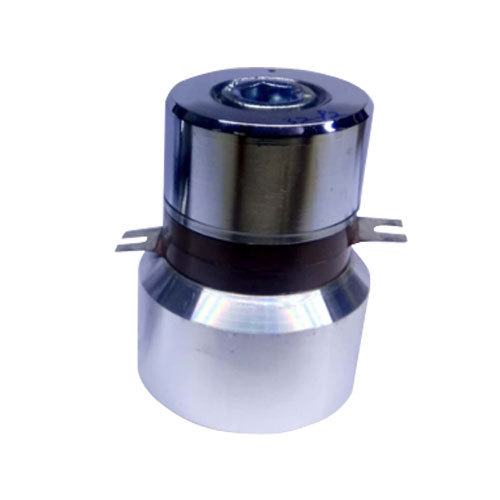
Ultrasound Waves- Everything You Need to Know
- What is Ultrasound?
The human ear can only perceive sound between the range of 20 Hertz (Hz) to 20,000Hz (20kHz).
Ultrasound waves are the form of sound waves that have frequencies that exceed the upper limit of the human hearing capacity (i.e., frequencies higher than 20kHz).
Ultrasound transducers are often utilized to create these ultrasound waves for multiple applications including medical imaging, Non-destructive Testing (NDT), and various industrial applications.
The velocity of ultrasound varies depending on the medium it traverses.
Typically, in the air, at room temperature (approximately 20 degrees Celsius or 68 degrees Fahrenheit), ultrasound travels at a speed of roughly 343 meters per second (m/s), which equates to approximately 1235 kilometers per hour (km/h) or 767 miles per hour (mph).
In various common substances, the speed of Ultrasound differs.
In ultrasonic transducer testing and NDT applications, understanding the types of ultrasonic transducers is vital.
Ultrasonic transducers, often used in NDT, play a crucial role in sending and receiving high-frequency sound waves for inspections.
These transducers come in various designs, each suited for specific purposes.
If you're wondering what an ultrasonic transducer is, it's a device that transforms one form of energy (usually electrical) into Ultrasound, and vice versa, facilitating numerous applications in fields like medical imaging, materials testing, and industrial measurements.
When it comes to using ultrasonic transducers for Non-destructive Testing (NDT), understanding the versatility of ultrasonic probes and UT transducers is crucial.
Ultrasonic transducer types play a vital role in NDT processes, as these transducers are designed to send and receive high-frequency sound waves, allowing for precise inspections of materials and structures.
The specific values for Ultrasound frequency and wavelength can vary depending on the application, and different materials or mediums can have different speeds of sound.
Working of Ultrasonic Transducers
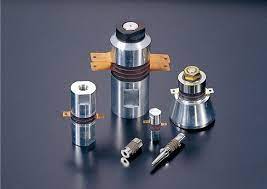
Ultrasonic Transducers, often discreet within technological marvels, are the keystone of transformation across industries and scientific domains.
A thorough grasp of their operation is paramount to harness their potential.
Whether in medical imaging, revolutionizing diagnostics, or in industry, where exacting quality control standards are set, an intricate understanding of Ultrasonic Transducers operation drives progress.
What is an Ultrasonic Transducer?
Ultrasonic Transducers are devices that emit and receive sound waves beyond the range of human hearing.
Working Principle of Ultrasonic Transducers
When voltage is applied to a piezoelectric crystal, it vibrates, generating high-frequency sound waves.
These waves propagate through a medium, creating a radiated field.
In reception mode, the transducer detects returning sound waves, converting them into electrical signals.
Understanding the radiated fields is vital for precise imaging and measurements in applications like medical diagnostics and Industrial Testing.
Radiated fields refer to the region or space around the transducer where ultrasonic waves are emitted or received.
These fields consist of high-frequency sound waves that propagate through a medium, such as air or tissue.
Radiated fields are essential for applications like medical imaging and industrial testing, where they allow for the transmission and reception of ultrasonic signals, enabling precise measurements and imaging of objects and structures within the medium.
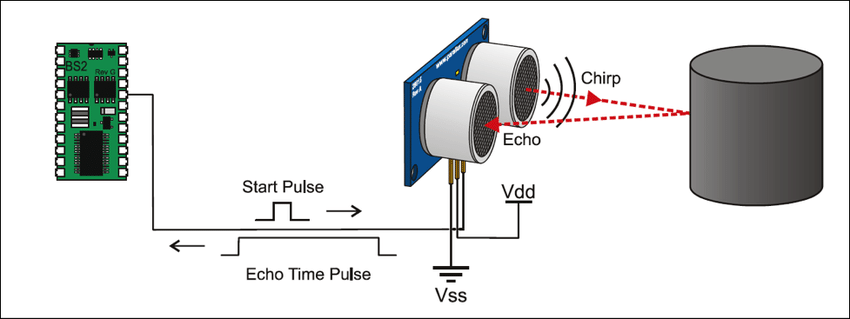
Piezoelectricity:
Piezoelectricity, observed in select crystalline materials such as quartz and lead zirconate titanate (PZT), is a foundational principle within ultrasonic transducer technology.
It is the generation of electric charges when these materials experience mechanical stress.
This phenomenon is fundamental to Ultrasonic Transducers as it facilitates the conversion between electrical energy and mechanical vibrations.
When an electrical voltage is applied to piezoelectric materials, they undergo precise deformations, resulting in the generation of mechanical vibrations at ultrasonic frequencies.
Conversely, when ultrasonic waves interact with these materials, their mechanical vibrations induce electrical signals.
This relationship enables ultrasonic transducers to both emit and receive ultrasonic waves.
Piezoelectricity forms the core of Ultrasonic transducer functions, enabling the seamless interconversion of electrical and mechanical energy.
This elegant interaction serves as the foundation for a myriad of scientific, medical, and industrial applications, where ultrasonic waves play a pivotal role in exploration, diagnosis, and quality control.
Transducer Components:
The key components of ultrasonic transducers are:
- Active Element:
The central component, usually a piezoelectric crystal-like quartz or PZT (Lead Zirconate Titanate), serves as the transducer's core.
It generates ultrasonic waves when subjected to electrical voltage (emission) and converts incoming ultrasonic waves into electrical signals (reception).
- Backing Material:
Positioned behind the active element, the backing material absorbs and dampens unwanted vibrations that can degrade image quality.
It ensures cleaner ultrasound signals by mitigating backward-propagating vibrations.
- Matching Layer:
Located between the active element and the target medium, the matching layer optimizes ultrasonic wave transmission.
It minimizes impedance mismatch, reducing wave reflection at the crystal-medium interface.
This enhances energy transmission and reception efficiency, resulting in improved image quality and signal-to-noise ratios.
These components work in harmony to facilitate the emission and reception of ultrasonic waves with precision and efficiency, a fundamental aspect of ultrasonic transducer performance in various applications.
- Ultrasonic Wave Generation:
When an electrical voltage is applied to a piezoelectric crystal within an Ultrasonic Transducers, it undergoes deformation due to the piezoelectric effect.
This deformation results in mechanical vibrations. Resonance, where the applied voltage matches the crystal's natural frequency, amplifies these vibrations.
- Propagation of Vibrations:
The mechanical vibrations travel through the transducer, including the backing material and matching layer, into the examined medium.
- Frequency Control:
Precise frequency control is vital. The applied frequency determines ultrasonic wave properties, affecting resolution and penetration depth.
Higher frequencies offer finer resolution but shallower penetration, while lower frequencies provide deeper penetration with reduced resolution.
Thus, frequency control ensures tailored ultrasonic waves for specific applications, ensuring accurate imaging and effective anomaly detection.
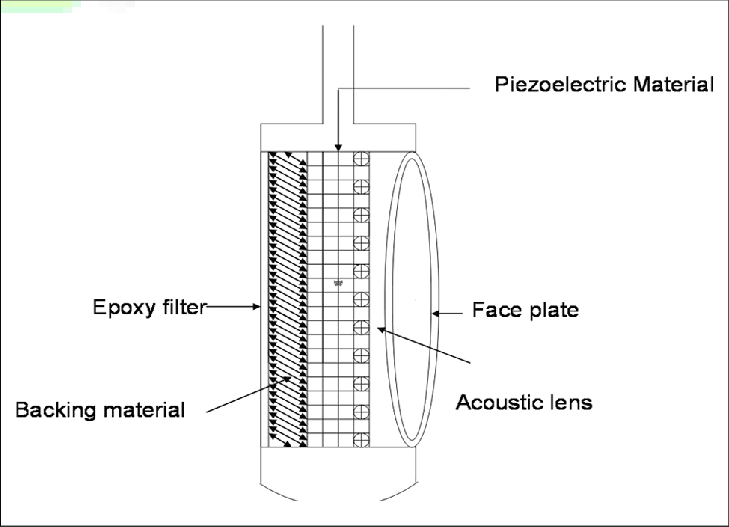
Ultrasonic Transducers as Receivers:
Ultrasonic Transducers serve a dual role, seamlessly transitioning between emitting and receiving ultrasonic waves.
This versatility is achieved through the reverse piezoelectric effect during reception:
- Reverse Piezoelectric Effect:
When incoming ultrasonic waves interact with the transducer's piezoelectric crystal, mechanical vibrations induce electrical signals due to the reverse piezoelectric effect.
- Signal Processing:
These electrical signals undergo amplification, conditioning, and conversion for data interpretation.
The processed data forms the basis of applications such as medical imaging or industrial flaw detection.
Ultrasonic Transducers efficiently alternate between emitting and receiving ultrasonic waves, utilizing the reverse piezoelectric effect during reception to generate and process electrical signals for a wide range of practical applications.
- Signal Processing and Control:
Signal processing and control electronics play a pivotal role in maximizing the capabilities of Ultrasonic Transducers:
Optimization:
These components fine-tune transducer performance, ensuring precise control over emitted and received signals.
- Signal Enhancement:
Advanced signal processing techniques, made possible by modern advancements, significantly improve the accuracy and clarity of ultrasonic imaging.
Signal processing and control electronics are indispensable for harnessing the full potential of Ultrasonic Transducers, enabling high-quality imaging and data acquisition in various applications.
Types of Transducers Used in Non-destructive Testing
Ultrasonic Transducers in Non-destructive Testing (NDT) are crucial for sending and receiving ultrasonic waves to inspect materials for defects.
Some common types of ultrasonic transducers used in NDT include:
- Contact Transducers:
These are the most common Types of Ultrasonic Transducers. They have a piezoelectric crystal element that makes direct contact with the test material.
Contact transducers are effective for inspecting solid materials but may require a couplant (gel or oil) to ensure good acoustic coupling between the crystal and the material.
- Immersion Transducers:
Immersion transducers are designed for use in water or other immersion tanks.
They are often used in the inspection of large or complex-shaped objects, such as aerospace components.
Immersion transducers provide consistent and reliable results as they ensure full contact with the test piece.
- Angle Beam Transducers:
These transducers are used to introduce sound waves into a test material at specific angles, typically 45 or 60 degrees.
Angle beam transducers are useful for detecting defects in welds and for measuring the thickness of materials with a high degree of accuracy.
- Phased Array Transducers:
Phased array transducers utilize multiple elements in an array to generate and control ultrasonic beams electronically.
By varying the timing and amplitude of each element, phased array transducers can steer and focus the beam, making them highly versatile for inspecting complex geometries and detecting flaws at various angles.
- TOFD (Time-of-Flight Diffraction) Transducers:
TOFD transducers are specialized transducers used for detecting and sizing cracks and other defects.
They operate by measuring the time delay of diffracted ultrasonic waves to pinpoint the location and size of flaws accurately.
- Dual Element Transducers:
These transducers consist of two separate elements, one for transmitting and the other for receiving.
They are often used for thickness measurement and Corrosion Monitoring, where precise measurements are required.
- Longitudinal and Shear Wave Transducers:
These types of transducers produce different types of ultrasonic waves - longitudinal waves (L-waves) and shear waves (S-waves).
L-waves travel parallel to the direction of the wave propagation, while S-waves are perpendicular.
They are used to detect various types of flaws and material properties.
Each type of ultrasonic transducer has its advantages and limitations, making them suitable for different NDT Applications.
The choice of transducer depends on factors such as the material being tested, the type of defect being sought, and the geometry of the test piece.
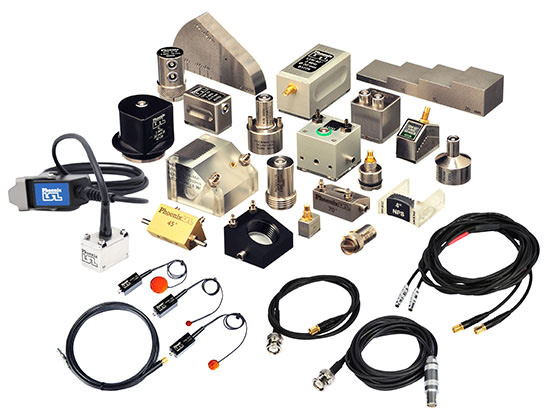
Applications of Ultrasonic Transducers
The operation of transducers is fundamental in various domains, ranging from medical diagnostics to industrial testing and environmental monitoring.
Understanding How Ultrasonic Functions is essential for their effective deployment, enabling accurate measurements, quality control, and safety in a multitude of fields.
Some applications of Ultrasonic Transducers are as follows:
- Medical Imaging:
Ultrasonic Transducers are integral to various medical imaging techniques such as ultrasound, MRI, and elastography.
In addition to general diagnostics, they aid in fetal monitoring during pregnancy, guiding minimally invasive surgeries, and assessing cardiovascular health.
A thorough understanding of transducer operation is essential for precise medical diagnoses and patient care.
- Industrial Testing and Quality Control:
Ultrasonic transducers are indispensable for Non-destructive Testing in Industries.
They detect flaws, cracks, and inconsistencies in materials, welds, and components across aerospace, automotive, and construction sectors. This ensures product safety and quality assurance.
- Material Characterization:
In materials science, Ultrasonic Transducers are used for material characterization, determining properties like density, elasticity, and hardness.
This is vital for selecting suitable materials in fields ranging from civil engineering to electronics manufacturing.
- Underwater Navigation:
Ultrasonic Transducers play a pivotal role in underwater navigation systems, including sonar technology used in submarines and marine research vessels.
They enable precise mapping of underwater terrain and detection of objects in the ocean depths.
- Environmental Monitoring:
Ultrasonic Transducers are employed in environmental monitoring applications, including measuring water flow rates in rivers and detecting gas leaks.
They aid in preserving the environment and ensuring safety.
- Automotive Collision Avoidance:
In the automotive industry, ultrasonic transducers are crucial components in collision avoidance systems and parking assist technologies.
They detect obstacles around vehicles, enhancing road safety.
- Cleaning and Welding:
Ultrasonic Transducers are used in ultrasonic cleaning and ultrasonic Welding Processes.
They efficiently remove contaminants and bond materials together in manufacturing applications.
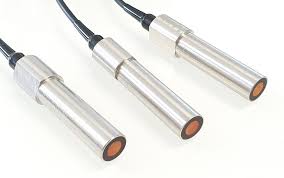
Advantages and Disadvantages of Ultrasonic Transducers
Ultrasonic Transducers have numerous pros and cons, some of which include:
Advantages of Ultrasonic Transducers
- Versatile Transducer Types
- Broad Range of NDT Applications
- High-Resolution Imaging with Ultrasonic Probes
- Minimal Environmental Impact
- Real-time visualization with NDT Probes
- Non-destructive Testing Capability with Ultrasonic Transducers
- Safe for Human Use (No Ionizing Radiation)
Disadvantages of Ultrasonic Transducers
- Selection Complexity Due to Various Transducer Types Available
- Specialized Transducers are Required for Different Materials and Inspections
- Limited Depth of Inspection with High-Frequency Probes
- Performance Limitations in Extreme Environmental Conditions
- Operator Skill Needed for Accurate Interpretation
- Reduced Penetration in Thick or Absorptive Materials
- Limited to Surface and Near-Surface Inspections
Conclusion
The pivotal role played by piezoelectricity and the intricately engineered transducer components is of paramount importance.
The phenomenon of piezoelectricity, manifesting in select crystalline materials like quartz and lead zirconate titanate (PZT), serves as the foundational principle upon which the entire edifice of Ultrasonic Transducers stands.
It is the profound interplay between electrical energy and mechanical vibrations that endows these ostensibly unpretentious devices with the remarkable ability to emit and receive Ultrasonic Waves with unerring accuracy.
The transducer components, encompassing the active element, backing material, and matching layer, constitute a meticulously orchestrated ensemble, each element meticulously tailored to optimize performance.
The active element, frequently comprising a piezoelectric crystal, assumes the mantle of the core component, instigating mechanical vibrations in response to applied voltage.
Positioned with strategic forethought, the backing material diligently absorbs and mitigates unwanted vibrations, ensuring the unadulterated fidelity of ultrasonic signals.
The matching layer, astutely situated, serves as the bridge that harmonizes impedance disparities, thus optimizing energy transmission into the target medium.
Within the continually evolving tapestry of Ultrasonic Testing Technology, specific applications have blossomed into prominence.
In the domain of medical diagnostics, Ultrasonic Transducers have assumed a pivotal role, facilitating non-invasive examinations, guiding critical medical interventions, and significantly contributing to patient care.
In the industrial sphere, they assume the mantle of sentinels, assuring the structural integrity of products, and thereby underpinning safety and quality standards.
Recent advances have borne witness to the advent of sophisticated signal processing techniques, profoundly augmenting the precision and lucidity of ultrasonic imaging.
Furthermore, Ultrasonic Transducers have found their utility in diverse fields encompassing environmental surveillance, materials science, and underwater navigation, unequivocally affirming their adaptability and overarching significance in contemporary society.
The synergy between piezoelectricity and the finely tuned transducer components represents the very keystone of Ultrasonic Testing technology.
Their profound influence resonates across multifarious domains, enriching the spectrum of human understanding, enhancing the quality of life, and propelling the frontiers of industrial advancement.
The ceaseless quest for exactitude and innovation continues to propel Ultrasonic Testing technology forward, promising even loftier achievements on the horizon.
In a world where the imperceptible is rendered manifest and the inscrutable becomes comprehensible, ultrasonic technology remains a paragon of human ingenuity and scientific advancement.
Key Takeaways
Ultrasonic Transducers are beneficial to a wide range of applications, including NDT(Non-destructive testing), medical imaging, environmental monitoring, and automotive monitoring.
They are used to emit and receive ultrasonic waves, that provide precision in testing, which makes ultrasonic transducers vital to the field of Non-destructive Evaluation.
The working of ultrasonic transducers involves the generation of high-frequency sound waves through the piezoelectric effect, and these waves create radiated fields that are essential for applications like medical imaging and Industrial Testing.
References
1. Niterra
2. ResearchGate
